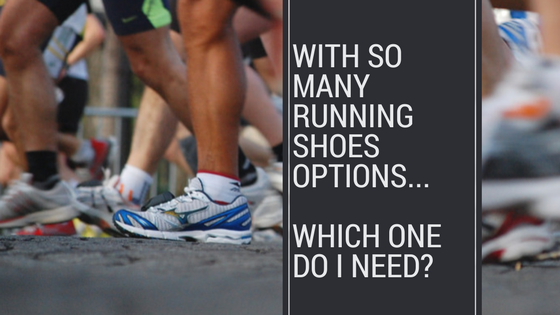In our previous blog on “How to Choose the Right Sports Shoe for Your Foot Type” we discussed the importance of choosing the right type of running shoes for your gait and foot type to minimise injury and fatigue in the lower limbs and feet.
Once you know what foot type you have the next step is to choose a shoe that will match the activity you will be doing. Therefore this months blog is based on the different types of running shoes available for particular activities.
This concept becomes more important if you do the same activity 3 or more times a week and now require a sport-specific shoe. If you like just going to the gym and partaking in a range of different classes and fitness activities then it may be best to stay with a cross trainer.
Please remember you should always have your foot type assessed first as this will narrow your choices down in each style and category of sport shoe.
The next thing to consider when selecting a activity base shoe is what your goals are? Are you wanting to just improve your fitness and partake in a charity fun run? Or are you wanting to compete and have a podium with your name on it? This will allow you to decide if you are after a mid range shoe or a high performance shoe.
So Lets Look at the Various Types of Running Shoes:
Running Shoes:
Designed and built for forward and back motion with less emphasis on side way stability. Often more flexible in the toe area to allow for forefoot striking and generally comprise of a thicker heel and midsole to assist in decreasing shock absorption, which can be up to 5 times your body weight, whilst running.
The curved soles and the front tip of the shoe help with direction of the foot, with distinctive sole tread to allow traction and guidance of the foot whilst running.
Racing Flats:
A more low profile, lighter running shoe that is in-between a running shoe and a minimalist shoe. They are designed and made for extra speed during shorter distances with higher intensity, preferably 5-10 km distances.
Minimalist Shoes:
Created to be very similar to running barefoot and as close to the ground as possible. Soles are generally less than 7 mm thick, with zero heel elevation and cushioning. Believed to increase proprioception and muscle strength within the lower leg and foot.
Cross- Trainers:
The best “all rounder” shoe for gym junkies, designed for a wide variety of activities. With a flexible forefoot, extra cushioning for enhance shock absorption and increased lateral support for ankle movement.
Trail Running Shoes:
Need to preform 2 main function of providing grip on a rugged terrain and to protect the feet. The soles tend to be stiffer and have a more aggressive tread pattern with deeper lugs. Protective toe boxes are also designed to prevent toe injuries , bruising and blisters from rough surfaces and rocks.
If this sounds all a little too confusion and you are not 100% sure what category of shoe you fall into, then it may be best to visit a specialty store such as The Athlete’s Foot. This sports shoe franchise store uses a comprehensive fit analysis tool (Fitzi), which examines your foot in motion, using a video and pressure mapping to help find the right shoes for your feet.
However if you are experiencing any type of foot pathology, pain or wear orthotics it is best to see a podiatrist who can biomechanically assess your feet and lower limbs and write you a footwear prescription or advise you on a suitable style of shoe.










